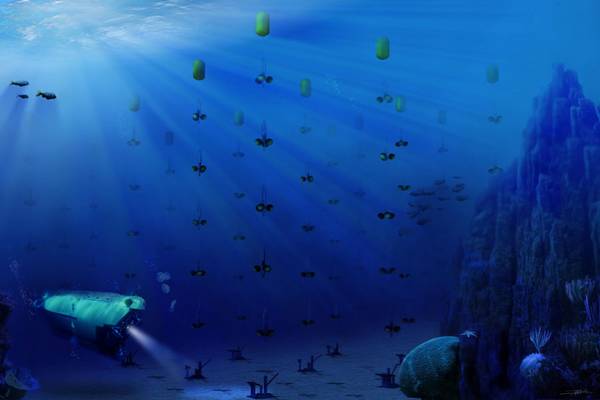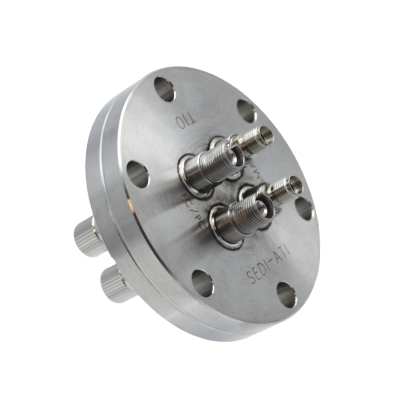DetectionNeutrinos
Design of optical fiber networks for underwater neutrino telescopes
SEDI-ATI has equipped the Antares neutrino telescope with a network of hermetic optical fibers consisting of inline feedthroughs, electro-optic penetrators, and multifiber bundles resilient to underwater pressure.
MajorContraints
- Deployed 2500 m underwater in sea salt,
- High pressure < 1000 bars,
- Traction due to pull buoys,
- Long cable distances > 400 m,
TheChallenge
Detecting high energy neutrinos, which are precious particles for the understanding of the Universe, at a depth of 2500 m.
Constitution and functioning of the telescope
The Antares underwater telescope consists of twelve 400 m long lines, holding 75 photomultipliers each.
Both the optical communications and the power supply of the photodetectors transit through electro-optic water blocking penetrators. These are hybrid electro-optic feedthroughs tested at 350 bars. They establish a secure and hermetic connection with 21 optical fiber links consisting of single-mode SMF28e fibers.
Thanks to the total obscurity procured by the abyssal conditions, Antares can observe the southern hemisphere sky through the terrestrial globe. And it is protected from cosmic radiation by the natural shield of 2500 m of seawater.
A neutrino detector named ANTARES
The Antares telescope (acronym of Astronomy with a Neutrino Telescope and Abyss Environmental Research) is a neutrino detector submerged 2500 m deep in the Mediterranean Sea, and 10 nautical miles south of Porquerolles (near Toulon, France).
This experiment has two main objectives: high energy astronomy and search of the missing mass called dark matter.
Sea water as an ally to trace light emission
The Antares eyes are using the large seawater volume to trace the very weak light emission coming from muons-neutrinos interaction. The neutrinos matter interaction is so small that neutrinos detection is a real challenge!
In fact, Antares can observe the cosmos from the abyss thanks to 900 photodetectors and a complex network of hermetic optical fiber assemblies.
SEDI-ATISolutions
The Antares telescope’s optical fibers; a network of hermetic optical fibers:
- Electro-optic water blocking penetrators,
- Electro-optic bundles,
- Inline hermetic fiber-optic feedthroughs,
AdvantagesSolution SEDI-ATI
- Electro-optic water blocking penetrator: electro-optic feedthrough tested at 350 bars, making possible the link between, the detector and the communication/power supply cable,
- Electric side: 9 power supply links,
- Optical side: 21 fiber links of single-mode SMF28e, < 0.3 dB attenuation without connector, and thus no return loss,
Related product
UHV fiber-optic feedthrough with adapter interface on CF and KF flange
The KTRAV-T10 “CF and KF vacuum fiber optic feedthrough with adapter interface” is a multichannel feedthrough. It is available with either a KF flange for high vacuum applications or a CF flange for ultra-high vacuum applications down to 10-10 mbar.



